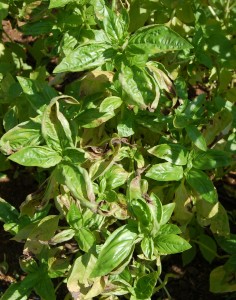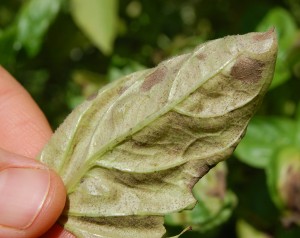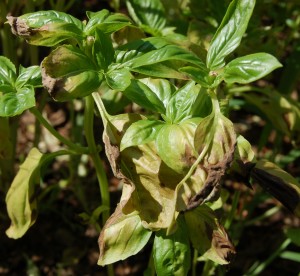What Is Wrong With My Basil Plant?
go.ncsu.edu/readext?366922
en Español / em Português
El inglés es el idioma de control de esta página. En la medida en que haya algún conflicto entre la traducción al inglés y la traducción, el inglés prevalece.
Al hacer clic en el enlace de traducción se activa un servicio de traducción gratuito para convertir la página al español. Al igual que con cualquier traducción por Internet, la conversión no es sensible al contexto y puede que no traduzca el texto en su significado original. NC State Extension no garantiza la exactitud del texto traducido. Por favor, tenga en cuenta que algunas aplicaciones y/o servicios pueden no funcionar como se espera cuando se traducen.
Português
Inglês é o idioma de controle desta página. Na medida que haja algum conflito entre o texto original em Inglês e a tradução, o Inglês prevalece.
Ao clicar no link de tradução, um serviço gratuito de tradução será ativado para converter a página para o Português. Como em qualquer tradução pela internet, a conversão não é sensivel ao contexto e pode não ocorrer a tradução para o significado orginal. O serviço de Extensão da Carolina do Norte (NC State Extension) não garante a exatidão do texto traduzido. Por favor, observe que algumas funções ou serviços podem não funcionar como esperado após a tradução.
English
English is the controlling language of this page. To the extent there is any conflict between the English text and the translation, English controls.
Clicking on the translation link activates a free translation service to convert the page to Spanish. As with any Internet translation, the conversion is not context-sensitive and may not translate the text to its original meaning. NC State Extension does not guarantee the accuracy of the translated text. Please note that some applications and/or services may not function as expected when translated.
Collapse ▲If you’re planning to make pesto from your summer basil crop, do it sooner rather than later. This is because basil downy mildew, a fungal disease that attacks basil leaves, is now active in North Carolina.
The leaves of basil plants infected with downy mildew initially turn yellow and then brown. Symptoms show up on older leaves first. Upon close inspection, you may notice dark fuzzy spores growing on back of infected leaves. Spore production is most prolific during warm, humid and wet weather.
All types of basil can get this disease, though sweet basil is the most susceptible. The good news about basil downy mildew is that it only infects basil plants and will not spread to other types of plants in your yard and garden.
Once basil plants are infected, the best course of action is to remove them from the garden. Basil downy mildew requires a living host to survive and will not persist on dead plants or in plant debris, which means infected plants can be tilled into the soil or composted.
Do not overwinter infected plants indoors as this will provide a living host for the disease to persist in our area. Basil downy mildew can be passed on through infected seeds so don’t save seeds from plants showing symptoms. Remove any volunteer seedlings that come up where infected plants were growing as these will likely also have the disease.
Applications of fungicides have little impact on preventing this disease. If your basil plants are still healthy, you can reduce the chance of them getting downy mildew by keeping the foliage dry. While you can’t prevent rain from wetting your plants, you can help them dry off quicker by thinning and pruning plants to increase airflow around them. Also, when watering plants, avoid wetting the leaves by applying water at ground level or using a soaker hose.
There is little point in planting new basil this year because downy mildew will continue to be active until frost. There are several options for garden areas left empty by the removal of basil plants. In the piedmont and coastal plain there is still time to sow a second crop of squash, zucchini, cucumbers, or green beans for fall harvest. You can also sow a warm season cover crop such as buckwheat to be tilled into the soil in 30 to 45 days. Wait until late August to plant cool-season vegetable plants such as broccoli, kale, collards, cabbage, lettuce, and spinach and to seed carrots, beets, turnips, mustard, and parsley.
Learn more:
- Basil downy mildew fact sheet from NC State Extension
- Central North Carolina Planting Calendar for Annual Vegetables, Fruits, and Herbs
Visit your local Cooperative Extension center to learn more about gardening and landscape care. Find your county Extension center for local information and events.





